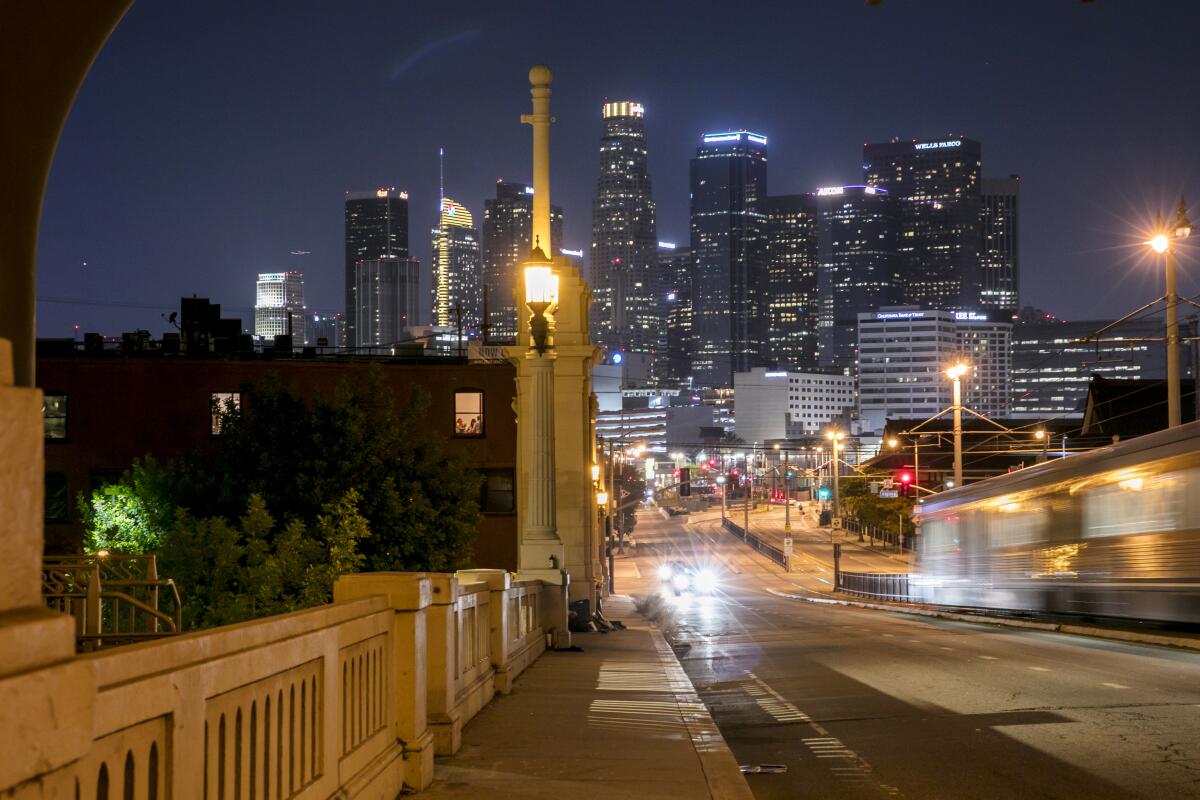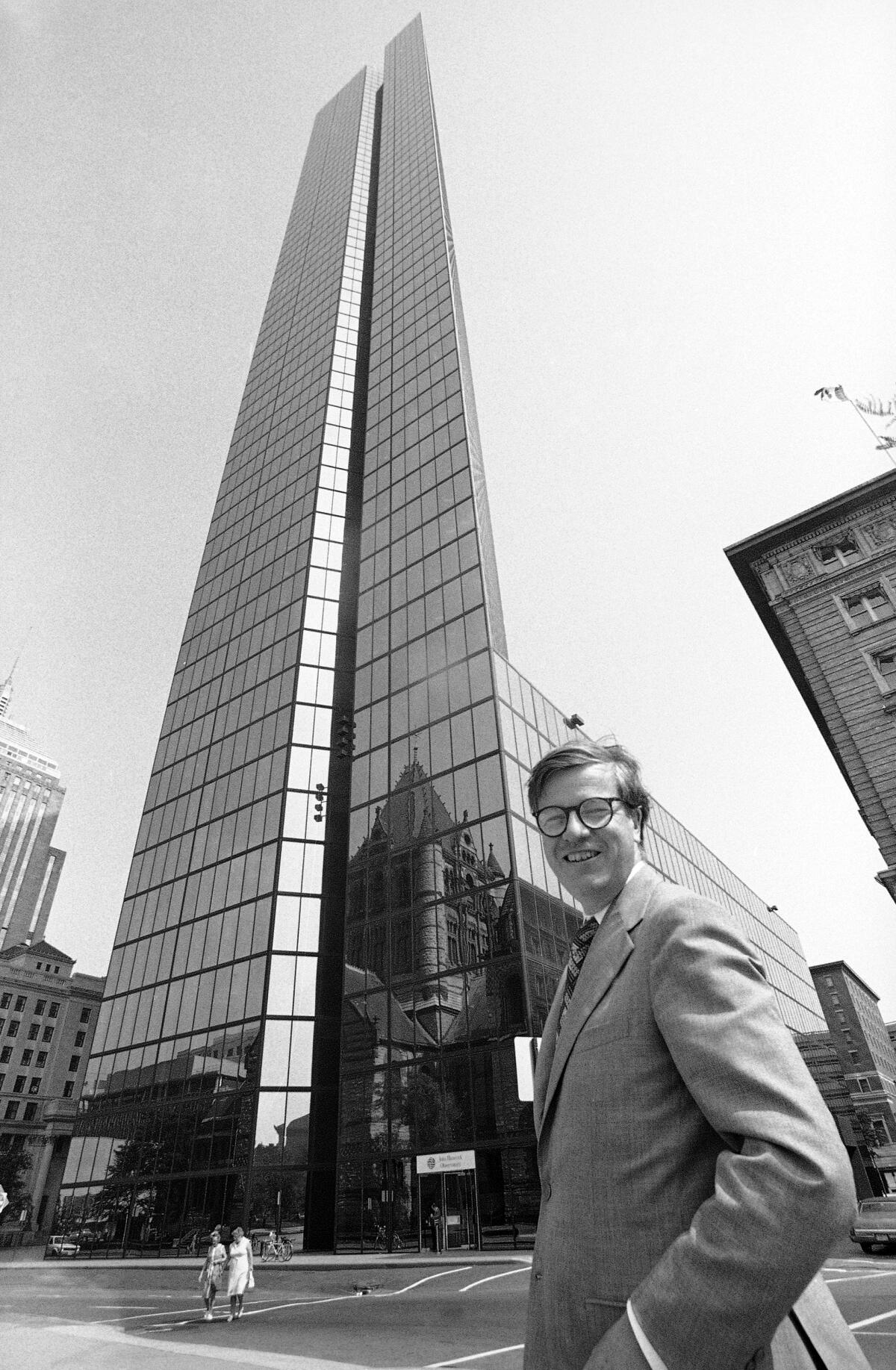Henry Cobb, architect of what long was L.A.’s tallest skyscaper, dies at 93

- Share via
Architect Henry N. Cobb, who designed downtown Los Angeles’ 72-story U.S. Bank Tower -- for decades the tallest building in the West, has died at his home in New York.
Cobb died Monday of unspecified causes, according to his firm, Pei Cobb Freed & Partners. He was 93.
For the record:
2:50 p.m. March 6, 2020The headline for an earlier version of this story said that Henry Cobb died at 94. He was 93.
The most celebrated building of Cobb’s 70-year career was the 800-foot-tall glass skyscraper now called 200 Clarendon but still widely known as the John Hancock Tower in Boston.
Landscape architect Laurie Olin, who worked with Cobb on several projects, called him “an architect’s architect.”
“He was a great collaborator. He was a great intellect. He was a very warm friend,” Olin told the Boston Globe. “Usually, you might get one or two of those qualities, but you don’t get all. You did with Harry.”
Cobb was born in Boston on April 8, 1926, and grew up in Brookline, Mass. He studied at Harvard’s Graduate School of Design where he first met prominent architect I.M. Pei, who was his teacher and later his partner.
Cobb moved to New York in 1950 to start his career in skyscraper architecture but ended up designing multiple buildings in Boston, including Harbor Towers and the John Joseph Moakley U.S. Courthouse and Harborpark.
Cobb also designed the Place Ville Marie in Montreal, the campus of the State University of New York Fredonia, and the Johnson & Johnson world headquarters in New Brunswick, N.J.

Though the Hancock Tower — often confused with Chicago’s John Hancock Center — ended up becoming a Boston icon on par with the Old North Church, it wasn’t immediately accepted.
Many people protested plans because it was close to beloved Copley Square. Then, as construction neared completion in 1972, glass panels weighing as much as 500 pounds each started falling from the facade.
Many Bostonians called the falling glass “retribution for overreaching,” Cobb told the New York Times in 2010.
The firm ordered replacement glass, but the bad publicity and litigation costs nearly drove the Pei firm to financial ruin. Cobb focused primarily on designing office buildings as the firm rebounded.
In 1989, Cobb designed the U.S. Bank Tower, a soaring building clad in pink Italian granite that rose above the skyline from Bunker Hill in downtown L.A. Until the Wilshire Grand Center was erected in 2017, the U.S. Bank Tower was the tallest building in Los Angeles.
Survivors include his wife, Joan; three daughters; and three grandchildren.
A Times staff writer contributed to this report
More to Read
Start your day right
Sign up for Essential California for the L.A. Times biggest news, features and recommendations in your inbox six days a week.
You may occasionally receive promotional content from the Los Angeles Times.







